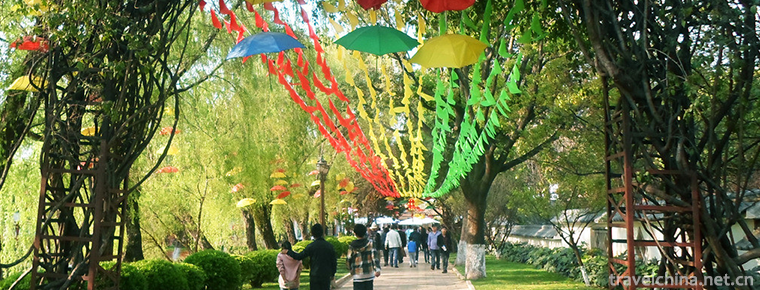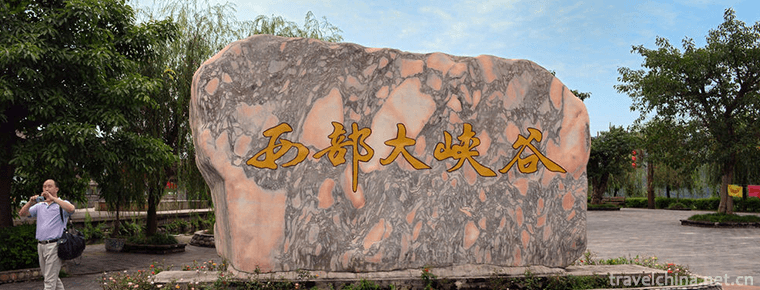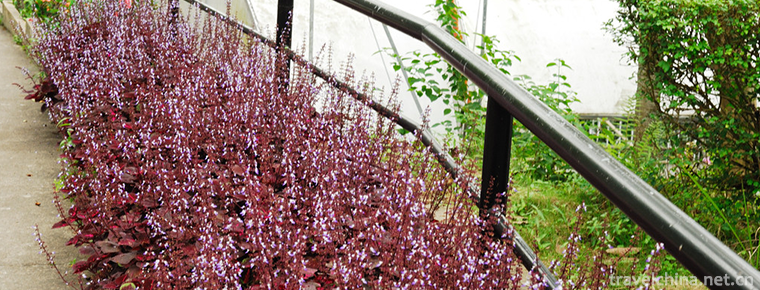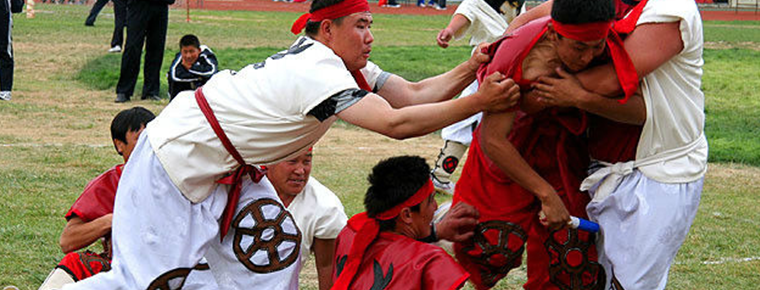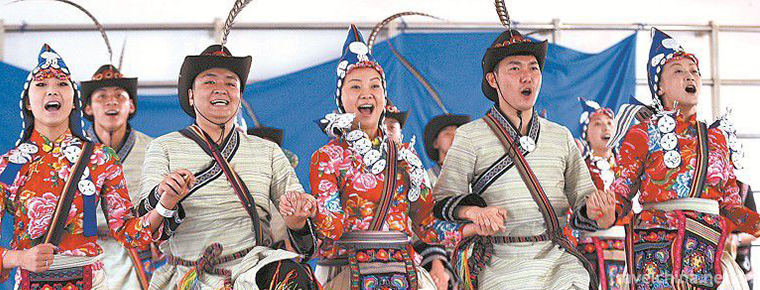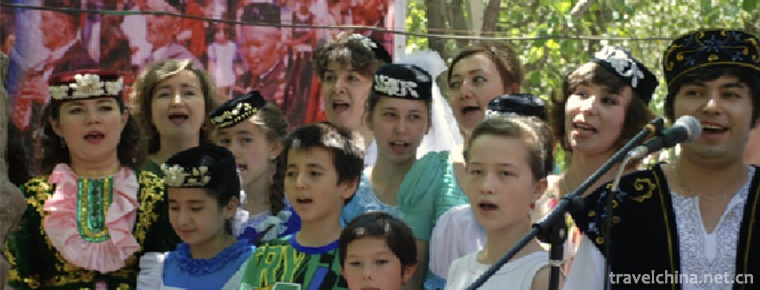Shaoshutun and Munona
Shaoshutun and Munona
Manmaisankang National AAA Scenic Area, where every day the love story between Zhaoshu Tun and the Peacock Princess Munona, beautiful music, more than 100 peacocks falling from the sky, the beautiful figure of the lake, the host's wonderful speech, tells this beautiful love story.
On June 7, 2008, Shaoshutun and Lumunona were listed in the second batch of national intangible cultural heritage list with the approval of the State Council.
Historical Origin
"Shaoshutun and Namunona" is a long narrative poem with love as the main line: Prince Shaoshutun of Mengbanga and Princess Namunona of Mengbanga Peacock Kingdom met by the golden lake, and got good love. Disasters brought about by war destroyed the good love, but the prince recovered the good love after thousands of hardships. Although long poems originated in the mid-feudal monarchy, that is, the most prosperous Dai feudal monarchy regime and the most prosperous Southern Buddhism, it does not express Buddhist monks'thoughts, but praises for life and love.
The long poem "Shaoshutun" is widely circulated in the Dai area and is deeply loved by the Dai family. Almost every village has handwritten copies. In areas where the Dai language is not popular in Yuanjiang and Jinping, it is also circulated in the form of oral rap and singing. Since the publication of the Chinese translation, it has attracted attention both at home and abroad. Newspapers and periodicals have been reprinted and radio broadcasted. In the early 1980s, it was adapted into the film Peacock Princess, which has made this Dai literary treasure known to the Chinese people. The influence of the long poems in Shaoshutun goes far beyond the Dai nationality area and occupies a place in the history of Chinese literature.
Long poems are healthy in thought and mature in art. With its far-reaching influence, different writings exploring the origin of stories have emerged, and different schools of thought have put forward different opinions: "Foreigners believe that the prototype of stories originated from ancient Sanskrit anthologies of India, first spread in Southeast Asia, and then with Buddhism introduced into Dai areas of China." Zhongyuan theorists believe that the prototype of stories originated from the ancient Sanskrit Anthology of India. Many nationalities in China have the myth of "the goddess of bird's clothes"; the "authism" holds that the myth of bird originated from the ancient Dai people. In the early primitive society, the ancestors of the Dai people once produced bird totem worship and created many myths of "the human head and the bird body" and "the marriage and match of human and bird", which is the most primitive combination of peacock fairies and human beings. Prototype.
Researchers believe that in order to explore the origin of the long poems in Shaoshutun, we should first find out: First, whether there was a large migration of clan ancestors from the north to the South or a large spread of Buddhism from the south to the north? Second, is the ancient folk myth born before, or the story of Buddha Bensheng born before?
According to historical records, the primitive pre-democracy of the Dai people came from Baiyue ethnic group, that is, Baiyue ethnic group migrated from southern China to the valley of Yunnan, and formed the Dai people after long-term integration with the local indigenous ancestors. Therefore, the primitive culture of the Dai Nationality contains the elements of Baiyue primitive culture. The legends of bird worship, bird totem and bird dress goddess are also one of the factors of Baiyue primitive culture. It was introduced into the Dai Nationality area with the great migration of Baiyue ancestors. This great migration of clan ancestors was completed about 3,000 years ago, more than 1,000 years before the birth of Buddhism. According to the order of historical development, the conclusion is that primitive myths such as "man-bird marriage" and "bird-clothes fairy" first spread to Southeast Asia along the coast of China with the great migration of clan ancestors, then over 1000 years later, along with Buddhism from Southeast Asia to the north, returned to the Dai region of Yunnan, China.
As for the relationship between the ancient folklore and the story of Buddha Bensheng, Mr. Ji Xianlin, a famous ancient philologist, historian and writer, made it clear that in his Preface to the Story of Buddha Bensheng, he said: "Most of them (referring to the folklore stories collected by Buddhism) have nothing to do with Buddhism, and some of them are even very secular. 。 However, Buddhists do not care about this. They take ready-made stories. They only need to designate a person, a God and an animal as Bodhisattva in a fixed form. A Buddhist story is even made. Thus, the source of the story of Buddha Bensheng also comes from the ancient folklore.
Shaoshutun is spread throughout the Dai nationality area. It has two forms: oral verse style and written verse style. Oral rhyme style mainly spreads in Yuanjiang, Jinping and Xinping Dai areas where Buddhist forces have not yet reached; written rhyme style manuscripts written in Dai language mainly spreads in Xishuangbanna, Dehong, Menglian and Jinggu areas where Buddhism is believed. The core content of the two is basically the same, and the details vary. There are no Buddhist temples or Dai Buddhist Sutras in the areas of Yuanjiang, Jinping and Xinping. The peacock princess who sang orally can not see the traces adapted from the stories of Buddhist sutras, and probably evolved from ancient myths. Handwritten copies of Dai poetry style circulated in Xishuangbanna and other areas are undoubtedly re-created based on the story of Shutun in Buddhist stories. If we explore further, we will find that the story of bird goddess in Buddha Bensheng comes from ancient folklore.
In this way, another conclusion can be drawn: the story prototype of the long poem Shaoshutun originated from the story of "the goddess of bird's clothes" in ancient times. Since the ancient South China and the Central South Peninsula were a common cultural area, this ancient story is also the spiritual product created by the ancestors of this common cultural area.
primary coverage
Legend has it that a handsome and brave prince called Shaoshutun in the ancient Canadian state left the palace to oppose his father's engagement when he became an adult, looking for his ideal companion everywhere. One day, when he came to the beautiful golden lake, seven princesses of the peacock kingdom came to the golden lake to bathe. The seven princesses of the kingdom, Namunona, were beautiful and noble, and deeply touched the prince. When the prince was worried, the dragon in the lake told the prince the secret of keeping the little princess. So the prince hid her peacock feathers while the seven princesses were bathing, so that she could not fly back. They fell in love at first sight and hit the spark of love.
Six "national treasures" in the Dai Garden reveal the excellent history and culture of the Dai nationality. It will carry the Shenzhou of history and the living ecological museum into the future, and cross the beautiful new space and time...
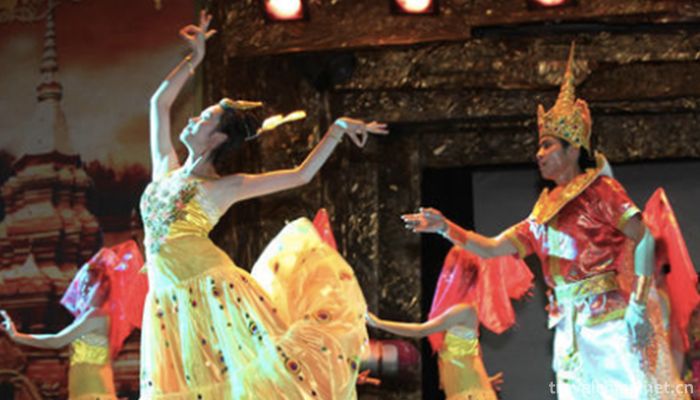
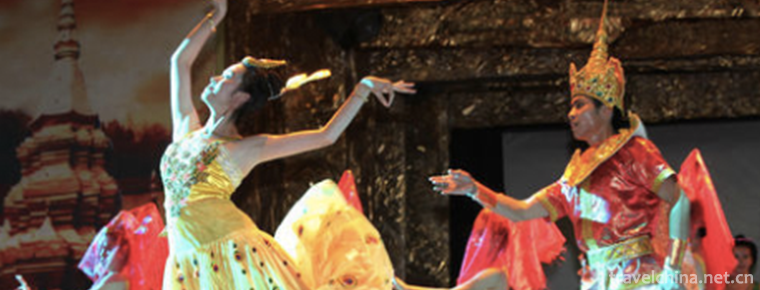
Shaoshutun and Munona
-
Sertar County
Sertar County is a county under the jurisdiction of Ganzi ...
Views: 246 Time 2018-10-12 -
Wucai Beach
The Wucai Beach is located in Buerjin County, Altay area, north end of Xinjiang. It is located on the first and second terraces on the North Bank of Ertiz River, the only one injected into the Arctic
Views: 130 Time 2018-12-22 -
Grand View Park
Daguan Park is located in the Dianchi Lake, about 2 kilometers west of Kunming City. It was built in the first year of Hongwu in the Ming Dynasty (1368 A.D.). In the thirty-fifth year of Emperor Kangx
Views: 218 Time 2019-01-06 -
Kunlun Mountains
Kunlun Mountain, formerly known as Kunlunqiu, also known as Kunlunxu, is the god mountain in ancient Chinese legend, the ancestor of Wanshan Mountain, the birthplace of Chinese civilization, and the k
Views: 181 Time 2019-01-29 -
Western Grand Canyon
Western Grand Canyon Hot Spring is a national AAAA-level tourist attraction, located in Shuifu City, Yunnan Province, 32 kilometers away from Yibin City, Sichuan Province
Views: 151 Time 2019-02-25 -
Yongji Ecological Park
Yongji Eco-Park is located in Daling Town, Huidong County, Huizhou City, Guangdong Province. It covers an area of about 1300 mu. It was solely invested and constructed by Hong Kong Yongji Food Group i
Views: 458 Time 2019-03-05 -
Ewenke to seize the pivot
Pivot-snatching is a traditional competitive event of Ewenki nationality. It was performed by the representative team of Inner Mongolia Autonomous Region in the 6th National Minority Traditional Sport
Views: 156 Time 2019-04-28 -
Achi Wood Scraping of Lisu Nationality
"Aqimuguo" is a kind of self-entertaining dance for the masses, which is spread in the upper reaches of the Cangjiang River with Yezhi Township as the center. Its characteristics are that it
Views: 323 Time 2019-06-17 -
Saban Festival of the Tatar Nationality
The Saban Festival (also known as Ploughshare Festival) of the Tatar Nationality is a unique traditional festival of the Tatar Nationality. Every year, after the spring sowing of all the farmers in th
Views: 184 Time 2019-06-18 -
Anhui Medical University
Medical University Of Anhui (Anhui Medical University), referred to as "an Medical University", located in the capital of Anhui. Hefei City Yes. Key universities in Anhui By Anhui Provincial
Views: 135 Time 2019-10-10 -
Yibin local specialty
The production of bamboo spring, bamboo carving and bamboo weaving in Yibin city began in Yuan and Ming Dynasty, with excellent materials and local characteristics and life interests. Therefore, he became famous both at home and abroad and entered the court many times.
Views: 421 Time 2020-12-18



